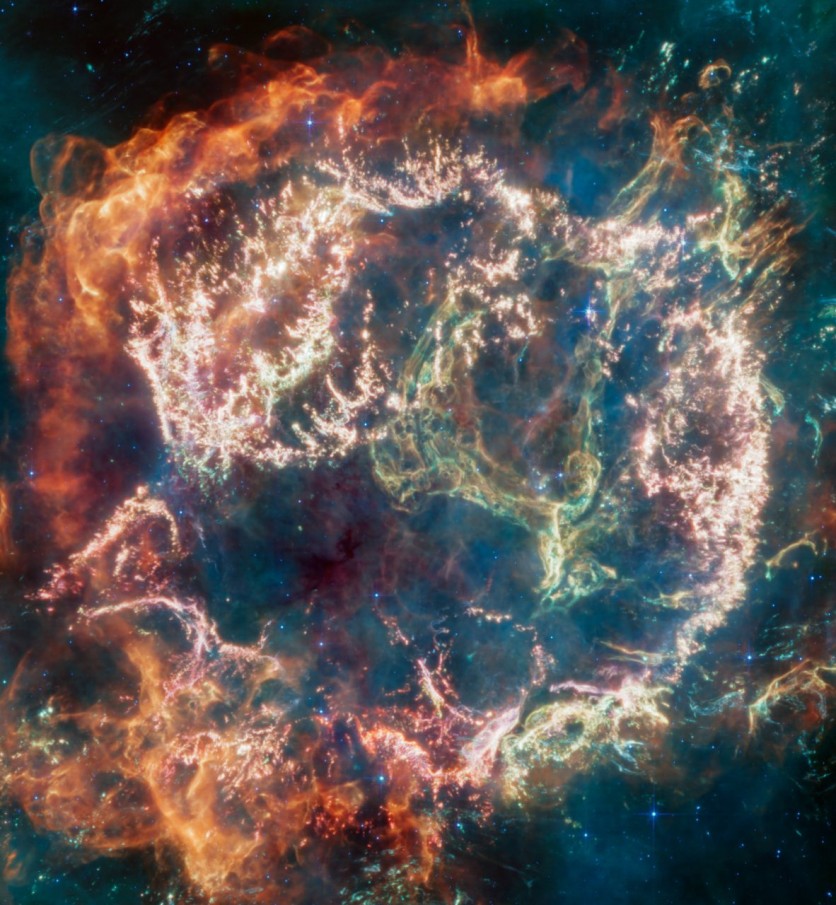NASA's James Webb Space Telescope has captured a stunning mid-infrared image of Cassiopeia A (Cas A), the youngest known remnant from an exploding, massive star in our galaxy.

Stellar Explosion 340 Years Ago
The supernova remnant was created by a stellar explosion 340 years ago from Earth's perspective, making it a unique opportunity for scientists to learn more about how such supernovae occur.
"Cas A represents our best opportunity to look at the debris field of an exploded star and run a kind of stellar autopsy to understand what type of star was there beforehand and how that star exploded," said Danny Milisavljevic of Purdue University, the principal investigator of the Webb program that captured these observations.
The new image shows incredible detail not seen before in previous infrared images, providing scientists with a more comprehensive understanding of the remnant.
The colors of the image hold a wealth of scientific information, including curtains of material appearing orange and red due to emission from warm dust on the bubble's exterior and mottled filaments of bright pink representing material from the star itself, which is shining due to a mix of various heavy elements, including oxygen, argon, and neon.
Also seen are fainter wisps of star material close to the cavity's interior. The Green Monster, nicknamed due to the loop over the right side of the central cavity that appears to be green, is perhaps the most noticeable feature in the image.
Read Also : NASA's James Webb Space Telescope Spots 4 Incredibly Distant Galaxies, Formed in Early Universe
The Green Monster
The Green Monster's shape and complexity are unexpected and difficult to comprehend because it is dotted with what appear to be mini-bubbles, as per NASA.
Where cosmic dust arises from is one of the scientific questions that Cas A might resolve. According to observations, even the youngest galaxies in the early cosmos are discovered to contain enormous amounts of dust.
It is challenging to account for the formation of this dust without mentioning supernovae, which eject massive amounts of heavy materials into space.
Astronomers are hoping to learn more about Cas A's dust composition by observing it with Webb to improve our comprehension of how planets and humans are formed.
NASA notes that for life to exist as we know it, supernovae like the one that created Cas A are essential. They dispersed elements like the iron in our blood and the calcium we find in our bones throughout intergalactic space, sprinkling new generations of stars and planets with these elements.
The research on Cassiopeia A may shed light on the origins of cosmic dust, a crucial element in the formation of new celestial bodies.
The findings from this study have the potential to significantly impact our understanding of the universe's origin story and how the building blocks of life are formed.
Webb's advanced capabilities have allowed astronomers to explore previously unexplored areas, and the data from the telescope will continue to be analyzed and studied for years to come.

ⓒ 2025 TECHTIMES.com All rights reserved. Do not reproduce without permission.




